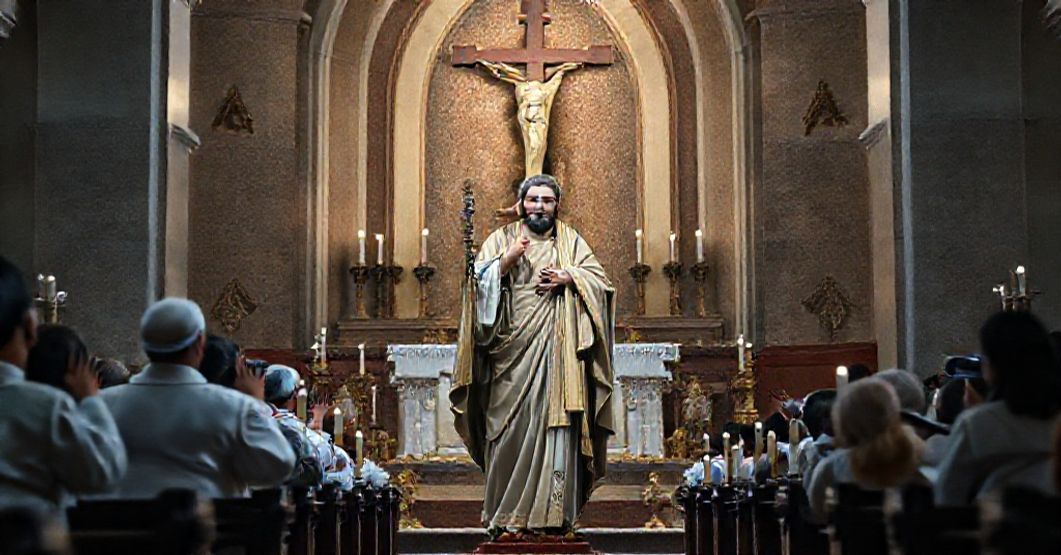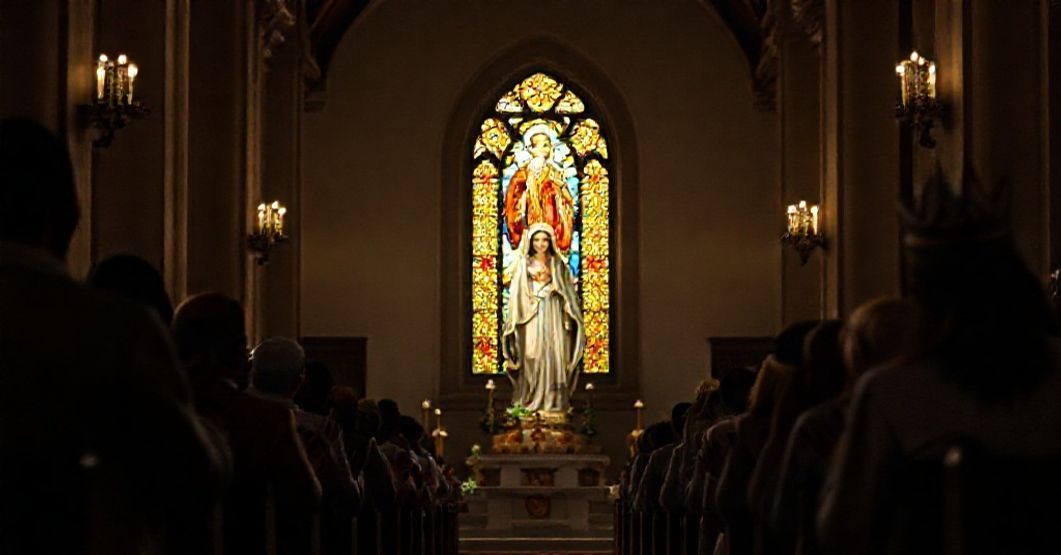Antipopes of the Antichurch



















Timeline of this heretical pontiff
Encyclical Letters
+ 15 posts1959
+ 7 posts1961
+ 4 posts1962
+ 2 posts1963
+ 2 postsApostolic Exhortations
+ 3 postsApostolic Constitutions
+ 93 posts1958
+ 6 posts1959
+ 87 postsMotu Proprio
+ 15 posts1958
+ 1 posts1959
+ 1 posts1962
+ 11 postsApostolic Letters
+ 151 posts1958
+ 4 posts1959
+ 63 posts1960
+ 78 posts1961
+ 1 posts1962
+ 4 posts1963
+ 1 postsSpeeches
+ 99 posts1958
+ 2 posts1959
+ 26 posts1960
+ 29 posts1961
+ 16 posts1962
+ 24 postsMessages
+ 6 posts1959
+ 4 postsHomilies
+ 4 postsLetters
+ 152 posts1958
+ 1 posts1959
+ 48 posts1960
+ 32 posts1961
+ 31 posts1962
+ 30 posts1963
+ 10 postsNot categorized
+ 1 posts1958
+ 1 postsNews feed


Vel in repositarum (1960.11.21)
The Latin text under consideration is a brief act of John XXIII naming Saint Joseph, Spouse of the Blessed Virgin Mary, as principal heavenly Patron before God of the Diocese of Maracay in Venezuela. It recalls long-standing devotion to Saint Joseph in Maracay, notes the erection of the diocese by Pius XII, mentions the request of Bishop José Ali Lebrun Moratinos and clergy and faithful, and, invoking supposed apostolic authority, decrees Saint Joseph as primary patron with all liturgical rights. In doing so, however pious its outward phrasing, this act is a juridical and theological façade: a token of continuity used to cloak the usurpation of Petrine authority and to integrate authentic devotion into the conciliar machinery that would soon devastate the Catholic order.


Praefervidum erga Beata Maria Virgine (1960.11.23)
The document attributed to John XXIII, dated 23 November 1960, proclaims “Notre-Dame d’Afrique” (“Afrorum Domina”) as the principal heavenly patroness of the Archdiocese of Algiers, rehearsing the 19th–20th century history of Marian devotion in Algeria, recalling Pius IX’s elevation of the shrine to a minor basilica and the crowning of the statue, praising the continuous influx of Catholics and Muslims to the sanctuary, and formally extending to this Marian title the liturgical honours proper to a primary diocesan patron. It concludes with the typical juridical formula declaring the act firm, valid, and perpetually binding, issued “de plenitudine Apostolicae potestatis” in the third year of his “pontificate.” This apparently pious proclamation is in reality a symptom and instrument of the new syncretic, anthropocentric religion of the conciliar sect, abusing Our Lady’s holy name to veil an emerging cult of religious relativism and the displacement of the true Church by a paramasonic structure.


Luce collustrans (1960.12.22)
Luce collustrans is a brief Latin act of John XXIII, dated 22 December 1960, in which he, invoking Marian language and formal canonical style, declares the image of the Blessed Virgin Mary venerated as “de Izamal” to be the principal heavenly patroness of the archdiocese of Yucatán, confirming liturgical honors and privileges, and grounding this gesture in the “Marian year” atmosphere and the approaching fourth centenary of the diocese. The text, seemingly pious and traditional in vocabulary, already manifests the juridical and theological subversion of authority characteristic of the conciliar revolution: an usurper presumes to legislate for the universal Church and to instrumentalize Marian devotion as sentimental ornament for an emerging neo‑religion that denies the Kingship of Christ and prepares the cult of man.


Qui Catholico (1960.12.16)
Qui catholico gloriantur nomine, the faithful of the Greensburg territory are here informed that the usurper in Rome, styling himself “Ioannes PP. XXIII,” by this brief Latin rescript “Qui Catholico” (16 December 1960), declares the Blessed Virgin Mary assumed into Heaven as “principal patroness” of the Diocese of Greensburg, appealing to their traditional Marian piety and continuity with Pittsburgh, and clothing the act in the full juridical solemnity of apostolic authority.
Varia
Announcement:
– News feed –implemented
– Antipopes separate web sites with their all documents refutation – in progress
